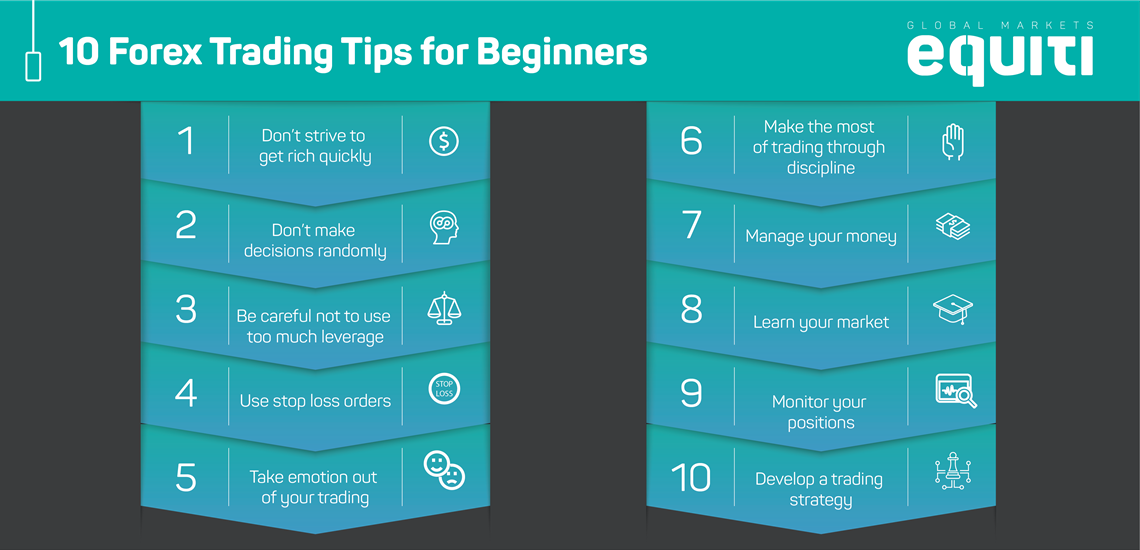In a world where the global economy is interconnected and currencies fluctuate constantly, Forex (Foreign Exchange) trading presents an intriguing opportunity for investors and traders seeking financial success. What exactly is Forex trading, though, and how can you get started in this dynamic market?

Image: www.equiti.com
Forex trading, simply put, involves the buying and selling of foreign currencies with the aim of profiting from currency fluctuations. Unlike the stock market where you trade shares of companies, here you’re trading one currency against another (e.g., EUR/USD, USD/JPY). The market operates 24/5, allowing traders to capitalize on market movements around the clock.
Getting into Forex trading can seem daunting, but it doesn’t have to be. Embark on this comprehensive journey designed for beginners and discover everything you need to know, from the basics to practical strategies.
Navigating Forex: The Basics
Before diving into the thrilling world of Forex, it’s crucial to build a strong foundation. Here are some fundamental concepts to wrap your head around:
-
Currency Pairs: Forex trading involves trading currency pairs, such as EUR/USD (Euro against the US Dollar) or GBP/JPY (British Pound versus the Japanese Yen). The first currency (EUR, GBP) is known as the base currency, while the second (USD, JPY) is the quote currency.
-
Bid and Ask Prices: The bid price is the price at which a trader can sell a currency, while the ask price is the price at which they can buy it. The difference between these prices, known as the spread, is the broker’s fee.
-
Leverage: Leverage allows traders to control a larger position with a smaller initial investment, potentially increasing their returns. However, it’s a double-edged sword that can magnify both profits and losses.
-
Fundamental and Technical Analysis: Forex traders use two main types of analysis to make trading decisions. Fundamental analysis examines economic and political factors that influence currency values, while technical analysis focuses on price patterns and trends to predict future market movements.
Unveiling the Exciting World of Forex Trading
Now that you have a solid grasp of the basics, let’s delve into what makes Forex trading so alluring:
-
24/5 Market Access: Unlike traditional stock exchanges, the Forex market operates around the clock, providing traders with continuous opportunities to trade. This flexibility allows you to fit trading around your schedule.
-
High Liquidity: Forex is the most liquid financial market globally, with trillions of dollars traded daily. This immense liquidity ensures tight spreads and swift order execution.
-
Leverage Power: Leverage amplifies your potential returns, but use it cautiously. It can lead to substantial losses if not managed properly.
-
Global Reach: The Forex market is decentralized, connecting traders worldwide. This global reach provides access to a vast pool of trading partners and liquidity.

Image: appraw.com
What Is Forex Trading For Beginners
Beginner’s Guide to Forex Trading: Practical Steps
Ready to venture into the world of Forex trading? Here’s a step-by-step guide to help you get started:
-
Choose a Reputable Broker: Research and select a regulated and trustworthy Forex broker that meets your trading needs.
-
Open a Trading Account: Create a live or demo trading account to practice and familiarize yourself with the platform.
-
Fund Your Account: Deposit funds into your trading account using a method supported by your broker.
-
Analyze the Market: Study market conditions using fundamental and technical analysis to identify trading opportunities.
-
Place a Trade: Once you have identified a trading opportunity, enter the market by placing a buy or sell order.
-
Monitor and Manage Your Trade: Keep a close eye on your trades and adjust your strategy as needed based on market movements.
Remember, Forex trading involves risk. Start small and gradually increase your position size as you gain experience. Education and practice are crucial for success in this dynamic market.






